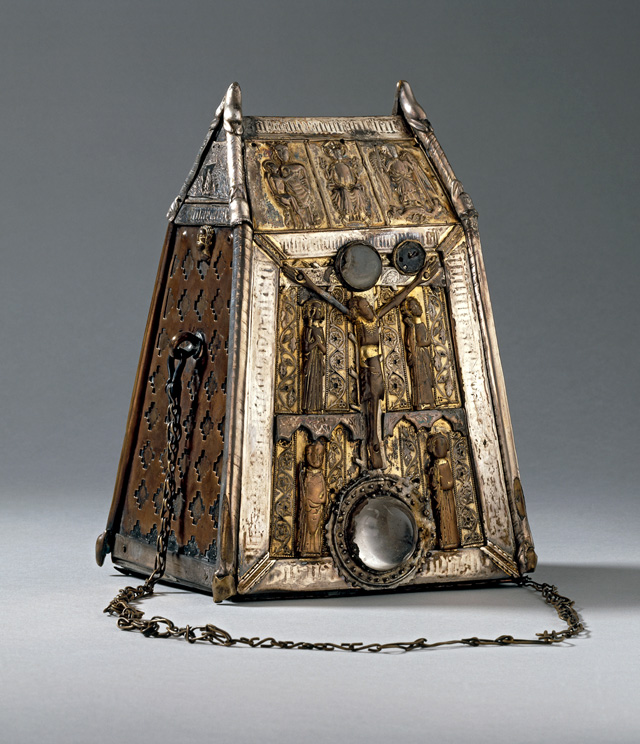Bell and Bell Shrine of St. Conall Cael
The British Museum, London
Copyright © The Trustees of the British Museum

 Select the image to zoom
Select the image to zoom
This bell contained within a later shrine casing was reputed to have belonged to St. Conall Cael, the abbot of Inishkeel, County Donegal, in the sixth century. The bell itself is very simple in its design and decoration. It is pyramidal with traces of bronze sheeting, and has a T-shaped bronze mount on the top. The mount is engraved with a large incised cross, and the sections are decorated with animals and ring-chains. The shrine covering the bell, decorated with silver plates incised with figures of God the Father, the Virgin and Child, the Archangel Michael, the crucified Christ, and various saints, was made during the fifteenth century and is far more elaborate than the object that it houses. Many Irish shrines were "redecorated" or reenshrined years after their creation: the Stow Missal Shrine and the Shrine of St. Patrick's Tooth were both altered in the fourteenth century. The bell shrine was integral to the celebration of St. Conall's feast day, when pilgrims gathered at his well on the island of Inishkeel. John O'Donovan, writing for the ordnance survey in 1835, describes this local ritual. "This chain O'Breslin threw around his neck, and from it the bell hung down his breast, exhibiting to the enthusiastic pilgrims the glittering gems and the symbol of the bloody sacrifice." The O'Breslin family were the ancestral family of St. Conall and keepers of the shrine until the mid-1800s. There is no known reason why these bell shrines are a particularly Irish custom. The practice of enshrining objects associated with, or owned by holy figures, was encouraged heavily through royal patronage from the twelfth century and was not reserved for bells alone: croziers, clothes, and other items were also encased and venerated. Water, when drunk from a bell shrine, was believed to have healing properties.




